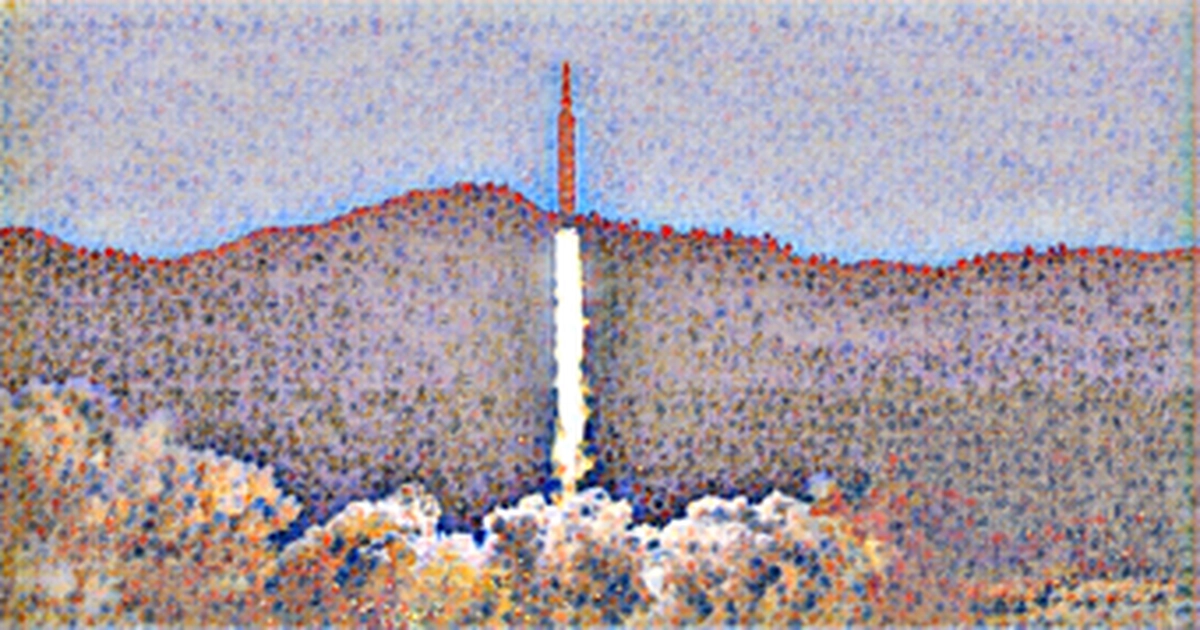
SEOUL, Jan 14, Reuters -- Even as debates over their capability raged, a series of hypersonic missiles recently tested by North Korea sparked sudden talk of preemptive strikes and arms races amid concerns about the vulnerability of U.S. troops and their allies in Asia.
In the span of two weeks, North Korea kicked off the new year with three missile tests, sparking reactions from Washington not seen since Pyongyang stopped testing its long-range missiles, which can strike the United States in 2017.
At least two of the latest tests were of what North Korea called hypersonic missiles while details on the third, launched on Friday, were not immediately available.
Thehypersonic missiles, which have only regional reach, are not a threat to the continental United States. But the weapons - which can fly below defences and change course at high speed - could be a major upgrade in North Korea's striking power against its neighbours, and experts say it is not clear how the U.S. and its Asian allies could counter that.
These kinds of offense-defence races have been taking place for many decades now, and what we see is that offence has the advantage, said Cameron Tracy, a researcher at Stanford University's Center for International Security and Cooperation CISAC in California. North Korea will continue to deploy more missiles and develop faster, more manoeuvrable systems that will keep South Korea vulnerable to attack. In recent years the United States and South Korea - hoping to restart stalled talks with Pyongyang - have played down North Korea's increasingly capable short-range missiles as concerning and a violation of the United Nations Security Council resolutions, but not a standout threat.
South Korea's leading presidential candidates are debating whether a preemptive strike is the best way to stop the new weapons, as the Biden administration imposed its first sanctions over the North's missile program this week.
Like most ballistic missiles, they travel at hypersonic speeds - more than five times the speed of sound - their key feature is the ability to manoeuvre and fly on lower trajectories than traditional ballistic missiles, making them harder to track and shoot down.
In a worst-case scenario, North Korea could launch the missile in a ballistic curve that makes it appear to be a test into the sea, but then have it manoeuvre below or around radar systems and even turn a corner to strike a target in South Korea or Japan with a nuclear weapon, said Melissa Hanham, a researcher at the CISAC.
Analysts caution that it is not clear how capable North Korea's new systems are or when they will be deployed. South Korea's military said that the missile tested this year appears to have a conical manoeuvrable reentry vehicle MaRV for its warhead, rather than the high-tech glider style seen on some missiles developed by China and other nations.
Many ballistic missile defence BMD systems are meant to shoot down missiles after high, arching flight of traditional ballistic projectiles, many of which touch the edge of space before they are plunging back to earth.
Joshua Pollack, editor-in-chief of the Nonproliferation Review, said that if they are deployed, they will pose a stiffer challenge to BMD systems designed to handle medium-range missiles, like THAAD and Aegis, which are currently designed to guard against weapons approaching their targets on a more or less straight line.
According to David Wright, a nuclear security researcher at the Massachusetts Institute of Technology, the incoming missiles could fly on even lower trajectories, with a shorter flight time, making defence more difficult for South Korea and the roughly 28,500 U.S. troops based there.
Wright's research shows that flying on a depressed trajectory could allow North Korea's latest missiles to evade defences in more distant places such as Japan, which hosts tens of thousands of U.S. troops.
Many South Koreans have become used to living under the threat of North Korean weapons, but governments in the United States and Japan can't ignore North Korea's advancing programmes, said Chun In-bum, a retired South Korean general.
He said that the North Korea's hypersonic weapon system will be improved. This is bad news for everyone. South Korea's defence ministry said on Thursday that it could not only detect the new missiles but also intercept them.
Some of the candidates for South Korea's presidency don't seem so sure.
If missiles are loaded with nuclear warheads, they will reach the Seoul metropolitan area in less than a minute, leading conservative presidential candidate Yoon Suk-yeol told reporters on Tuesday. Interception is practically unavoidable. Yoon said that diplomacy is needed to make sure a war doesn't happen. But if diplomacy fails, preemptive strikes would be needed to stop an imminent launch, Yoon said.
There is no evidence that a preemptive strike would eliminate the threat, according to Wright, who said North Korea hides its missiles.
If the vulnerability is a concern, the only realistic response is to negotiate with North Korea to reduce the risk of such attacks, he said.
